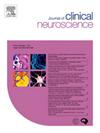Current and future clinical trials for the use of neuromodulation in the treatment of stroke: A review of the clinical Trials.gov database
IF 1.9
4区 医学
Q3 CLINICAL NEUROLOGY
引用次数: 0
Abstract
Neuromodulation is a rapidly growing field in neurosurgery and has shown promise in the treatment of stroke. The aim of this study is to review current clinical trials assessing the role of neuromodulation in the treatment of stroke and post-stroke impairments. Clinical trials were found using the search terms “stroke” and “stimulation.” A total of 996 clinical trials were included in this study with 386 excluded before analysis. Overall, the number of published clinical trials significantly increased over time (p < 0.001; r = 0.927). Of these, 452 (63.7 %) clinical trials were completed, 242 (34.1 %) were in the recruitment stage, and 16 (2.3 %) in the active and not recruiting stage. Of these trials, 77 were completed with published results. By treatment modality, 35 of the published trials evaluated the use of tDCS or TMS. An additional 28 of the published trials evaluated neuromuscular stimulation. Finally, three evaluated VNS, two evaluated medication treatment and nine were found evaluating a wide variety of other modalities. Other interventions included electrical stimulation of various peripheral nerves or muscles, vagal nerve stimulation, deep brain stimulation, and thermoneuromodulation. A majority of trials studied the effects of stroke on motor function (47). The remaining studies assessed outcomes including aphasia (10), pain (6), coordination and gait (5), imaging outcomes (5), swallowing (2), sensation (1) and cognition (1). There has been strong interest in studying the effect of neuromodulation on recovery after stroke with majority of the current clinical trials studying the use of tDCS or TMS to improve motor function.
求助全文
约1分钟内获得全文
求助全文
来源期刊

Journal of Clinical Neuroscience
医学-临床神经学
CiteScore
4.50
自引率
0.00%
发文量
402
审稿时长
40 days
期刊介绍:
This International journal, Journal of Clinical Neuroscience, publishes articles on clinical neurosurgery and neurology and the related neurosciences such as neuro-pathology, neuro-radiology, neuro-ophthalmology and neuro-physiology.
The journal has a broad International perspective, and emphasises the advances occurring in Asia, the Pacific Rim region, Europe and North America. The Journal acts as a focus for publication of major clinical and laboratory research, as well as publishing solicited manuscripts on specific subjects from experts, case reports and other information of interest to clinicians working in the clinical neurosciences.
 求助内容:
求助内容: 应助结果提醒方式:
应助结果提醒方式:


